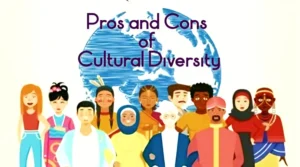Education is a fundamental human necessity. Access to higher education is getting closer to everyone who wants to study. Often, the decision to start an undergraduate or postgraduate degree depends on many factors such as time, work occupations, family responsibilities, or even the distance between the place of residence and the institution in which we want to study. In this panorama, study modalities such as “open and distance learning” appear that bring the university closer to people. These modalities break down the obstacles and make the decision to become a professional or a specialist easier. In this blog, we will discuss the importance of open and distance learning (ODL) in 21st century.

Why is Open and Distance Learning (ODL) So Important in 21st Century?
To explore the importance of open and distance learning (ODL) in the 21st century, let us understand the open learning system and the distance education system separately.
Open Learning System
Open learning is one of the types of education at the school and university level, which provides the opportunity to study for any person, regardless of his age or work, as long as this person has the mental and scientific ability to complete university education, and it was called open education because it has no restrictions for learning as is the case with education systems conventionality.
The open education system is distinguished by accepting everyone who holds a general secondary certificate, regardless of the cumulative average obtained, and it does not require the student to attend lectures regularly or to attend full-time courses. Rather, the student can study while working in another job. The student can also set the appropriate study schedule for his condition without interference from the university administration, as he can determine the number of subjects that he can pass during the semester in proportion to his financial capabilities and other circumstances.
There are many universities in India that adopt the open education system. This system has been adopted for a long time in Western countries. Now graduates of these open universities can get a job just like any graduate from other universities that adopt the traditional education system.
Advantages of Open Education
Open Education provides access to quality education and skill development for learners in remote areas as well as those who are not medically fit to attend classes on a daily basis.
There is no age limit as such. Anyone in any field of life at any age can pursue higher education.
The degrees and certificates awarded are UGC approved and valid in all respects.
The goal of open education is to provide equal opportunities for all to learn and acquire knowledge to raise their standard of living.
Open education can accommodate thousands of students, unlike regular education.
It assists students in choosing their own study schedule, which means not setting a date for completing the study and leaving the freedom for the student to finish his studies at the appropriate time for him.
It provides learning opportunities without having to leave the workplace. Also,it increases workers’ experience and knowledge in the workplace.
You can study the specialization that you feel meets your aspirations and desires and that you will achieve the success you want.
Distance Learning System
Distance learning is called e-learning or online education, and it is one of the modern forms of education, which is represented by departing from the traditional template of education, by separating teachers and students and using the latest technologies to facilitate communication between them. This type of education is suitable for students who cannot commit to a specific timetable. Because they are busy full or part-time, or they are in remote areas.
It is noteworthy that this type of education is accelerating and spreading widely all over the world, as it has become one of the main pillars of the education process.
Colleges and universities in this type of education allow students to learn from home only through a video conferencing system. This type of learning requires a computer and an Internet connection.
In order for a student to be successful in an academic program in distance learning, they must:
►Value self-learning for your own training, it is a skill for life and work.
► Have a high degree of responsibility, discipline and self-management to develop the academic program without permanent supervision.
► Adaptability and flexibility to new learning environments different from the traditional classroom.
► Willingness to use technology as a learning mediator.
► Oral and written expression skills for communication with the teacher.
► Availability of time to meet the academic requirements established in each of the subjects of the study program and develop independent work.
► Demonstrate an adequate degree of development of literacy and mathematics skills.
► Ability to interact with heterogeneous groups in terms of age, interests, occupation, motivations, experiences and aspirations.
Types of Distance Learning System
Distance education is divided into two basic types:
Synchronous delivery, where information and knowledge are transferred between the lecturer and the student in the current real-time.
Asynchronous delivery, where the lecturer transmits various information and knowledge and records it via video so that the student can watch it at a later time.
Advantages of Distance Education
There are many advantages offered by distance education, including:
Geographical exploitation so that information and knowledge can be obtained without being in the same geographical area or country in which the teacher is present. The teacher can also publish his audio, text, or video lectures on the Internet without the need to be in the same place where his students are.
The exploitation of time so that the student can choose the appropriate time for him to receive knowledge without the need to commit to the same time as explaining the lecture by his teacher.
Educational opportunities for many people, especially those who do not have the ability to enroll in higher education due to age or working conditions, etc., so that this system provides an opportunity to spread science and knowledge to different segments of society.
Easy to get admission: This can overcome the problem of absorptive capacity that many educational facilities suffer from. In the past, these facilities faced the problem of providing spacious places to accommodate large numbers of students, in contrast to the new educational system that provides the opportunity to obtain information for a very large number of students.
The Difference between Open Learning and Distance Education
The open education system is somewhat similar to the distance learning system, but there is a clear difference. The student who learns from a distance can pass exams and attend lectures through various media and television, as well as via the Internet, without any direct communication between the student and the teacher, while in Open education, there are certain times, and not long, that require the student to come personally to the university headquarters.
As for the traditional university education system, the student must attend all the lectures daily, and there is a minimum rate for admission to the university, and the university often determines the academic schedule and requires the student to pass it within a certain period of time.
Distance education is mostly subjective, and has no specific time frame, and its sources are also diverse, while open education belongs to a specific university, and has a specific time frame, and tests are held according to university standards.
Emerging Technologies in Open and Distance Learning
Modern technologies and educational technology have a major role in modern types of learning, which in turn seek to get rid of the problems of learning in traditional form. As such technologies are constantly evolving according to the needs and desires of the teacher, learners, and those who are about to learn in its electronic form.
There are many modern tools and technologies used in open and distance learning in general, including the following:
Internet networks: The Internet is the first technology used in e-learning in general and open learning in particular, as it makes it easy for everyone to connect through a group of network-connected devices to access learning at any time and place.
File transfer services: These electronic services are the basis for using the Internet to transfer data to and from users and some of them.
E-mail: E-mail is used as an asynchronous means of communication, through which you can receive messages and respond to them at any time convenient for you without the need for your presence at the same time.
Conversation or chat: It is a simultaneous technology that requires the presence of individuals at the same time in order to exchange information and text and audio messages and respond to them immediately. It is a rapid communication tool.
Educational forums: Educational forums are among the most used technical tools in education, as they are widely used because of their advantages that combine ease of sending to a large number of people and availability at any time.
Virtual labs and classrooms: These virtual classrooms and laboratories act as an alternative to the traditional laboratories within schools, where they are accessed through internet connection and laboratory experiments in various educational materials through simulation and modeling applications.
E-School: It is the only school that does not have an actual building, walls, or furniture, as it includes inside it a very large group of learners, teachers, and specialists in certain fields, and entry and participation in it, and higher certificates are obtained through it.
E-Library: Electronic library contains huge databases that include many books, references, and bibliography, which spares the learner from actually going to real offices and obtaining all information in all fields.
Read Also: Significance of ODL in Democratization of Education
Conclusion: Open and Distance learning
Human beings are God’s supreme creation. Education has undergone tremendous changes from the dawn of human civilization to the present day. With the increasing complexity of modern life and the desire for progress and prosperity, the formal education system is no longer able to meet people’s needs. Open and distance learning has become an effective alternative to the formal education system. It is very important for the emerging learning community as a whole and for the educationally backward or developing society. And it has its mission of lifelong learning and generalization.
Various technologies such as voice, video, data, and print are often used to bridge the learning gap in open and distance learning systems. This type of program gives people of any kind an alternative opportunity for higher education, minimizes time constraints, distance, or physical barriers in education, and helps modernize employees in their workplace.





